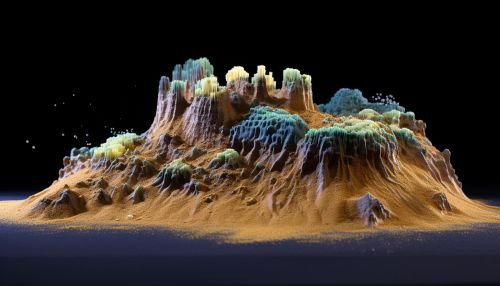Seafloor massive sulfide deposits
Introduction
Seafloor massive sulfide deposits (SMSDs) are a type of mineral deposit that occurs beneath the ocean floor. These deposits are formed by hydrothermal vents, which are openings in the seafloor where heated, mineral-rich water is ejected from the earth's crust. SMSDs are of significant interest to the scientific community and the mining industry due to their high concentrations of valuable metals such as copper, zinc, gold, and silver.


Formation and Composition
The formation of SMSDs is a complex process that involves the interaction of seawater with the earth's crust. When seawater seeps into the crust, it is heated by the underlying magma and becomes enriched with metals and sulfur. This heated, mineral-rich water then rises and is expelled through hydrothermal vents, where it comes into contact with the cold seawater. The sudden change in temperature causes the metals and sulfur to precipitate out of the water, forming the massive sulfide deposits.
The composition of SMSDs can vary widely depending on the specific conditions of their formation. However, they are typically rich in base metals such as copper, zinc, and lead, as well as precious metals like gold and silver. They may also contain significant amounts of iron, sulfur, and other elements.
Distribution and Exploration
Seafloor massive sulfide deposits are found in all of the world's oceans, but they are most common along mid-ocean ridges, where tectonic plate boundaries are spreading apart. These areas are characterized by high levels of volcanic activity, which creates the ideal conditions for the formation of SMSDs.
Exploration for SMSDs is a challenging and expensive process, due to the extreme depths and harsh conditions of the deep sea environment. However, advances in technology have made it increasingly feasible to explore and potentially mine these deposits. Techniques such as remote sensing, seabed mapping, and deep-sea exploration are commonly used to locate and study SMSDs.
Economic Significance
The economic significance of SMSDs lies in their high concentrations of valuable metals. With terrestrial resources of these metals becoming increasingly scarce, there is growing interest in the potential of SMSDs as a future source of supply. However, the extraction of these resources presents significant technical and environmental challenges.
The mining of SMSDs would involve the use of specialized equipment to cut and collect the deposits from the seafloor, followed by a process of extraction and refining to recover the metals. This would be a complex and costly operation, requiring significant investment in infrastructure and technology.
Environmental Considerations
The potential mining of SMSDs raises a number of environmental concerns. The extraction process would likely cause significant disturbance to the seafloor and could result in the release of harmful substances into the water column. There is also concern about the potential impact on deep-sea ecosystems, which are poorly understood and may be highly sensitive to disturbance.
In order to address these concerns, any future mining of SMSDs would need to be carefully regulated and monitored to ensure that the environmental impact is minimized. This would likely involve the development of new technologies and practices for deep-sea mining, as well as comprehensive environmental impact assessments.
